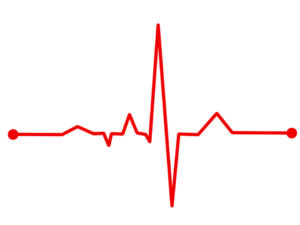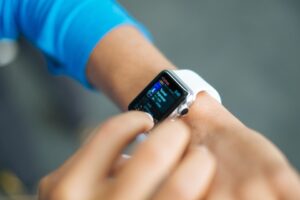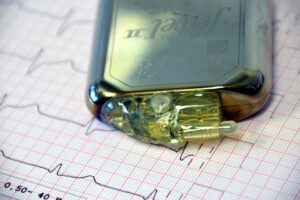Bringing 5 Cutting-Edge Cardiology Innovations Down to Earth

Leonardo Da Vinci once said, “Simplicity is the ultimate sophistication”. Let’s take the heart for example: to the layman cardiologists among us, the heart pumps oxygen around the body and respiratory system and removes carbon dioxide and wastes. Looking through the eyes of a cardiologist, the heart and its physiology contain a much deeper complexity and mystery. The following five cardiology innovations give us an insight into the diverse and sophisticated world of these medical professionals.
1. The first ever wirelessly powered heart pump
There is no question that heart pumps save lives. However, they do have limitations. For one, they need a significant amount of energy to increase blood output. A heart pump typically has a power cable that protrudes through the skin. This point of entry is an issue because there is a much higher risk of infection. With today’s heart pumps patients need to have ‘power gear’ on continuously; meaning they can only wear them for a limited amount of time.
As recently as last year, for the first time in medical history, a patient with heart failure was the recipient of a wireless heart pump powered by the Coplanar Energy Transfer (CET) system designed by Israeli based firm, Leviticus Cardio.
This wireless power system placed an internal coil-shaped battery around the lungs that is attached to the chest wall. Leviticus Cardio’s Coplanar Energy Transfer (CET) system powers the heart pump wirelessly with the Jarvis Pump Pedestal backing up the system.
It took just three days for the patient to recover from the operation. After which, they were able to stand without assistance. As they progressed and their wounds healed, the patient could walk around, and even go for a swim.
2. The sugary stent that dissolves the difficulty of microsurgery
It is common knowledge that too much sugar is unhealthy. However, as with all things, it can be put to good use.
You can imagine the skill required and the time it takes for surgeons to perform a delicate heart operation. The good news is that there is an innovative solution with the potential to make complex operations much less time consuming. Introducing the new sugar-based stent designed by Nebraska engineer, Ali Tamayol and colleagues. This device has the potential to make microsurgery much faster and easier. Tamayol tested this gadget and found it sped up the sewing process to just 5 minutes, as opposed to the usual 15 minutes!
So how does it work?
The small sugar-based stent wedges itself comfortably into the ends of two clipped neighboring arteries. By sticking to the interiors, it holds both ends of the arteries steady, providing structural support, allowing surgeons to do what they do best. Once the surgeons have completed the operation, the stent dissolves along with additives to combat clotting.
3. EKG/ECGs taken at home
 An incredible portable EKG/ECG machine called the Personal Cardiac Assistant (PCA 500) is now available on prescription from cardiologists. The PCA 500 created by QT Medical, a med-tech firm- located just outside Los Angeles, California- means patients can take their ECGs at home.
An incredible portable EKG/ECG machine called the Personal Cardiac Assistant (PCA 500) is now available on prescription from cardiologists. The PCA 500 created by QT Medical, a med-tech firm- located just outside Los Angeles, California- means patients can take their ECGs at home.
The patient follows instructions to place 12 leads on the correct place on their chest. The unit then records the reading to be downloaded and sent to their cardiologist using the accompanying QT cloud technology based app.
The device is recognized by the FDA for producing hospital-quality ECG readings. Cardiologists are now able to make diagnostic decisions based on ECGs done by their patients using this device from home.
4. Monitor your blood pressure using a wristwatch
 Imagine a wristwatch that measures your blood pressure letting the wearer get on with their daily routine.
Imagine a wristwatch that measures your blood pressure letting the wearer get on with their daily routine.
Omron Healthcare specializes in designing technology used in everyday life. Their latest offering is a smartwatch that tracks heart blood pressure data. This device fits comfortably around the wrist and its synthetic band expands and contracts and then keeps its shape when monitoring blood pressure. The other metrics this hi-tech smart watch measures include: sleep quality and daily exercise. It also comes with a free downloadable app that makes recommendations based on health readings taken by the watch during the waking hours of the day or while the user is sleeping at night.
5. The pacemaker with potential to transform pediatric cardiology
 In the field of pediatric cardiology, a pacemaker small enough to be placed underneath an infant’s ribcage looks to be the next breakthrough. Results from research show that the small size, about the size of a pill, allows for the placement procedure to be much quicker and less invasive than with current larger infant pacemakers. The device is the outcome of the combined efforts of engineers from Medtronic and the Children’s National Health System. It has been tested on infant models with successful results. Researchers are expecting to start clinical trials in the near future.
In the field of pediatric cardiology, a pacemaker small enough to be placed underneath an infant’s ribcage looks to be the next breakthrough. Results from research show that the small size, about the size of a pill, allows for the placement procedure to be much quicker and less invasive than with current larger infant pacemakers. The device is the outcome of the combined efforts of engineers from Medtronic and the Children’s National Health System. It has been tested on infant models with successful results. Researchers are expecting to start clinical trials in the near future.
Bringing Cardiology innovation to earth-The Take Away
In this ever-evolving era for healthcare and cardiology, researchers and innovators are bringing highly-complex advancements down to earth to make first-time breakthroughs, like the wireless CET heart pump power system.
The Israeli based company, Leviticus’ creation sped up recovery time and changed the life of a patient with heart failure. It will no doubt impact the lives of multitudes with similar heart issues.
The ingenious sugar based stent has real potential to make the most sophisticated and otherwise long and stressful micro-procedures much easier for both the heart surgeons and their patients. With this device, delicate operations will take less time and be much safer.
Today, the PCA 500 means patients do not need to leave home to have an ECG. The PCA 500 enables patients to complete Hospital Quality ECG recordings, and then send them to be evaluated by their cardiologist without having to drive to a hospital or medical center.
Omron Healthcare has brought innovation further down to earth with their smartwatch that measures blood pressure-day or night- a device that will enable patients to monitor their health and change their lifestyle when needed.
Finally, in pediatric cardiology, the next breakthrough is a pacemaker small enough for an infant to utilize with a minimally invasive procedure and powerful enough to enable patients to live as unencumbered as possible.
 By: Jonathan Gordon
By: Jonathan Gordon
